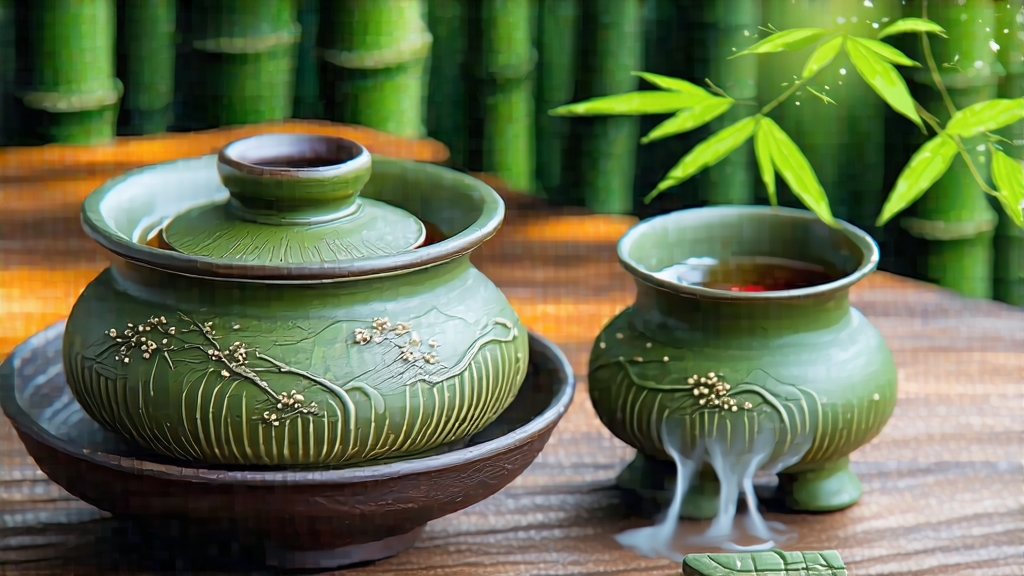
Tucked high in the western foothills of the Dabie Mountains, where morning mists rise off the Huoshan Valley like slow-moving silk, a tea once reserved for Tang-dynasty emperors still unfurls its golden tips each April. International drinkers may speak freely of Longjing or Da Hong Pao, yet few have tasted Huoshan Huangya—the “Yellow Bud of Huoshan”—a luminous, subtly savory yellow tea whose very color whispers of a hidden step in Chinese craft. To understand this leaf is to step into a story of mountain micro-climate, imperial tribute, and a delicate oxidation dance that stops just short of green, yet travels further than most whites.
Historical scrolls first mention “Huoshan yellow sprout” in 780 CE when Lu Yu, the sage of tea, noted that the prefecture of Shouzhou (modern-day Lu’an) sent “small yellow cakes” to Chang’an. By Song times the cakes had given way to loose leaf, and Ming dynasty taxation records list Huoshan Huangya among the eight “imperial teas” levied from Anhui. Caravans carried the down-covered buds along the Han River to the Grand Canal, then north to the Forbidden City, where eunuchs stored it in pewter jars lined with lotus leaves. Legend claims that Emperor Wanli preferred it to green tea because the gentle menhuang (sealed yellowing) process reduced “cold nature” and spared his delicate stomach during frigid Beijing winters.
Geography grants the tea its innate sweetness. Huoshan County lies at 31° N, 600–800 m above sea level, where acidic yellow-brown forest soil is laced with granite debris. The region receives 1,800 mm of rain annually, but more importantly 220 fog-shrouded days slow photosynthesis, boosting amino acids—especially L-theanine—so that even the raw leaf tastes of steamed edamame and mountain spring water. Local tea makers insist that the danxia-red cliffs flanking the Foziling Reservoir reflect afternoon heat back onto the bushes, coaxing the buds to flush a week earlier than those on the cooler north-facing slopes. These micro-terroirs divide Huoshan Huangya into three grades: “Golden Bud” picked before Qingming from the cliffsides; “Genuine Sprout” harvested between Qingming and Guyu; and “Valley Fragrance” plucked in late April when two leaves and a bud reach finger length.
Plucking begins at dawn when the leaf’s surface tension is still tight with dew. Experienced pickers use thumbnail, not finger pad, to avoid bruising; each basket holds no more than 500 g to prevent compression. The ideal standard is “one bud with one leaf just unfolding, 2.5 cm length, 70 % down coverage.” Within two hours the harvest must reach the village workshop, where three concentric bamboo trays are set above a shallow pit lined with glowing charcoal. Here the kill-green step diverges from green-tea protocol: leaves are tossed for exactly 90 seconds at 140 °C, enough to destroy oxidative enzymes yet preserve a hint of moisture in the central vein. The moment the leaf emits a faint magnolia scent, workers fling it onto rush mats for menhuang, the “sealed yellowing” that gives the category its name.
Menhuang is tea alchemy at its most restrained. The half-dry leaf is piled 8 cm deep inside cedar boxes lined with wet cotton cloth; core temperature is maintained at 32 °C for 4–6 h while the maker turns the pile every 30 min. During this rest, chlorophyll gently degrades into pheophytin, catechins dimerize into theaflavins, and a whisper of non-enzymatic oxidation occurs. The leaf color shifts from jade to pale topaz, while an aroma of fresh chestnut and steamed rice emerges. Crucially, the process stops before true red-tea fermentation; should the pile exceed 38 °C, the batch is downgraded to “old yellow leaf” and sold as filler. After yellowing, the leaf is baked twice—first at 80 °C for 20 min to lock in fragrance, then at 60 °C the following day to reduce moisture to 5 %. A final hand-sorting removes any purple or insect-bitten leaves, leaving only slim, downy spears that resemble miniature golden needles.
Western